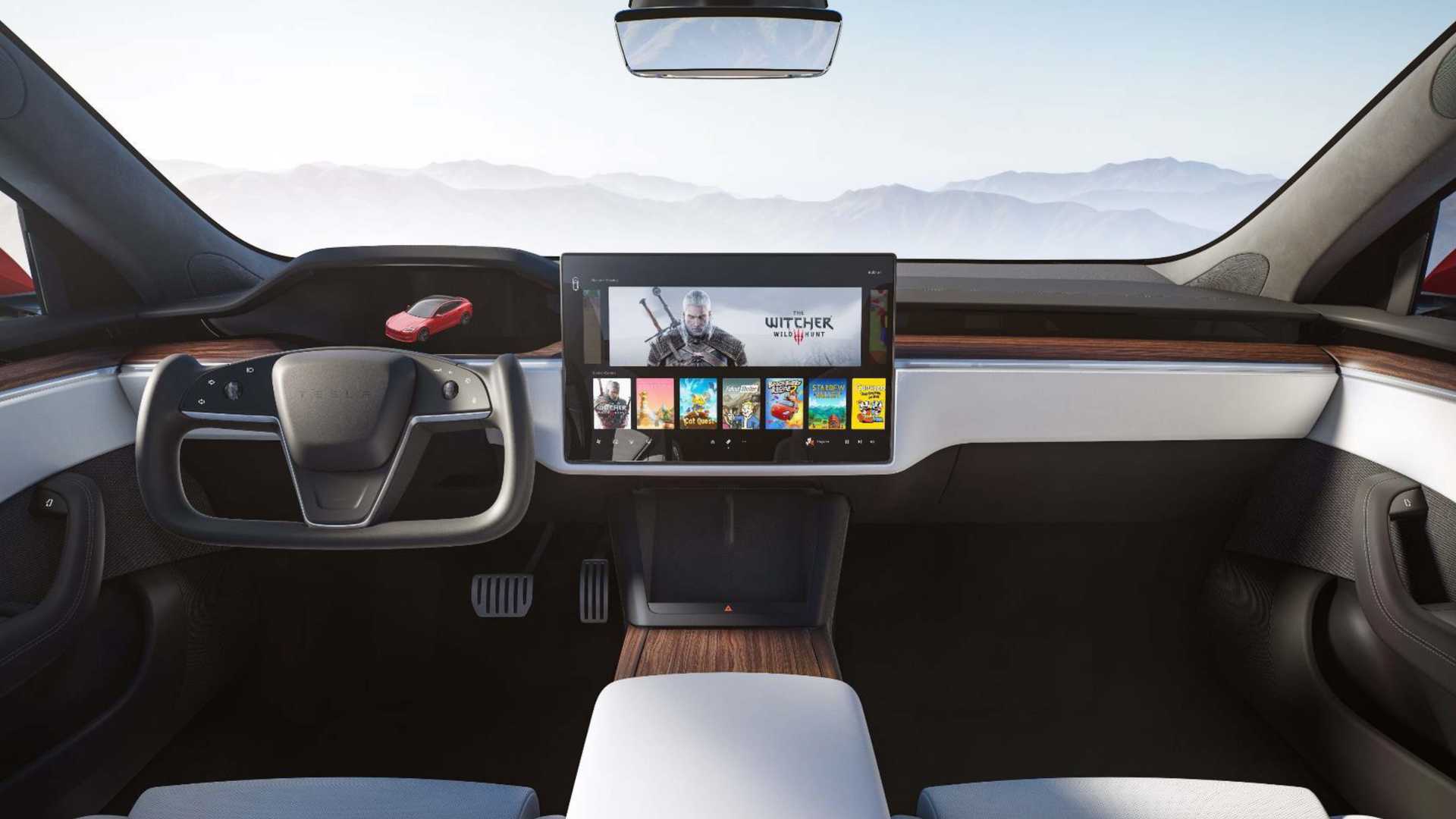

News
Tesla fans call for recall terminology update, but the NHTSA isn’t convinced it’s needed
Tesla fans have been calling for an update in recall terminology ever since Over-the-Air updates became more popular in resolving vehicle issues. However, the NHTSA, the agency responsible for handling recalls and vehicle safety, is not convinced that it is needed.
The majority of Tesla’s vehicle recalls are performed through software remedies, which makes things complicated when it comes to headlines. Far too often, media outlets run with headlines like “Tesla recalls 2 million vehicles for safety issue,” when in reality, the issue is something small and fixable through a software update that downloads and is applied while the owner is asleep.
Fans are not the only ones calling for a terminology update. CEO Elon Musk is calling for one as well and has on several occasions.
‘Outdated & Inaccurate’
After a 2022 “recall” on over 1 million Teslas for a window issue, mainstream media pushed the narrative that 1 million EVs were in need of a major fix. In reality, the problem was remedied through a software download and update, and not a single car needed to go to a service center for repair.
“The terminology is outdated & inaccurate. This is a tiny over-the-air software update. To the best of our knowledge, there have been no injuries,” Musk said in response to the recall.
The terminology is outdated & inaccurate. This is a tiny over-the-air software update. To the best of our knowledge, there have been no injuries.
— Elon Musk (@elonmusk) September 22, 2022
More recently, a 2 million-vehicle recall was initiated by Tesla and the NHTSA to increase font size.
“On affected vehicles, the letter font size of the Brake, Park, and Antilock brake system (ABS) visual warning indicators is smaller than 3.2 mm (1/8 inch), as prescribed in FMVSS Nos. 105 and 135,” the NHTSA said in its 573 Safety Recall Report.
Tesla’s font size causes 2.2 million vehicle ‘recall’ that’s really just an OTA upate
The 2.2 million vehicles affected were given a software update, which was downloaded and applied to all vehicles. It increased the font size without anyone needing to physically take their cars to a showroom.
‘No difference to the safety risk posed by a defect’
From the NHTSA’s perspective, recall still fits the bill of anything from a steering wheel that falls off to the font size being a size too small.
Teslarati reached out to the agency last week, asking if there were any internal plans or discussions regarding the terminology of a recall. In reality, there are more companies than just Tesla that would benefit from an update in terminology.
Ford is another company that has used Over-the-Air updates to solve vehicle problems.
The NHTSA told us that any defect, big or small, fits the bill of a recall, and whether it can be resolved through software or through a physical repair makes no difference. It’s still a safety issue:
“Defects that pose an unreasonable risk to safety are serious and should be remedied as soon as possible. The Vehicle Safety Act requires manufacturers to issue recalls to remedy safety defects. Whether a remedy can be completed at a local dealership or through an over-the-air software update makes no difference to the safety risk posed by a defect.”
Recalls are an acknowledgment of a safety defect in a vehicle, and how they’re repaired does not play into the terminology used. Recalls are important because they alert a vehicle owner of an issue, and sometimes, the OTA update may not be successfully applied, or it could persist after the fix is sent through software.
Comparing Vehicle Recalls to Phone Updates
A common comparison used by people who oppose the use of the word “recall” to describe an OTA update is that of a smartphone update.
iPhones are common recipients of software updates, and you’ll see people online facetiously say, “My iPhone is getting recalled!”
The NHTSA does not see a comparison, considering vehicle safety defects can put lives at risk on the road. The driver is at risk if things are not fixed, and others can be put in harm’s way as well.
Unfortunately, those who disagree with the use of the word “recall” may have to deal with it. It does not seem that the NHTSA has any plans to update the terminology used because the medium of repair is not what a recall applies to. It is the issue itself.
I’d love to hear from you! If you have any comments, concerns, or questions, please email me at joey@teslarati.com. You can also reach me on Twitter @KlenderJoey, or if you have news tips, you can email us at tips@teslarati.com.

News
Tesla starts showing how FSD will change lives in Europe
Local officials tested the system on narrow country roads and were impressed by FSD’s smooth, human-like driving, with some calling the service a game-changer for everyday life in areas that are far from urban centers.

Tesla has launched Europe’s first public shuttle service using Full Self-Driving (Supervised) in the rural Eifelkreis Bitburg-Prüm region of Germany, demonstrating how the technology can restore independence and mobility for people who struggle with limited transport options.
Local officials tested the system on narrow country roads and were impressed by FSD’s smooth, human-like driving, with some calling the service a game-changer for everyday life in areas that are far from urban centers.
Officials see real impact on rural residents
Arzfeld Mayor Johannes Kuhl and District Administrator Andreas Kruppert personally tested the Tesla shuttle service. This allowed them to see just how well FSD navigated winding lanes and rural roads confidently. Kruppert said, “Autonomous driving sounds like science fiction to many, but we simply see here that it works totally well in rural regions too.” Kuhl, for his part, also noted that FSD “feels like a very experienced driver.”
The pilot complements the area’s “Citizen Bus” program, which provides on-demand rides for elderly residents who can no longer drive themselves. Tesla Europe shared a video of a demonstration of the service, highlighting how FSD gives people their freedom back, even in places where public transport is not as prevalent.
What the Ministry for Economic Affairs and Transport says
Rhineland-Palatinate’s Minister Daniela Schmitt supported the project, praising the collaboration that made this “first of its kind in Europe” possible. As per the ministry, the rural rollout for the service shows FSD’s potential beyond major cities, and it delivers tangible benefits like grocery runs, doctor visits, and social connections for isolated residents.
“Reliable and flexible mobility is especially vital in rural areas. With the launch of a shuttle service using self-driving vehicles (FSD supervised) by Tesla in the Eifelkreis Bitburg-Prüm, an innovative pilot project is now getting underway that complements local community bus services. It is the first project of its kind in Europe.
“The result is a real gain for rural mobility: greater accessibility, more flexibility and tangible benefits for everyday life. A strong signal for innovation, cooperation and future-oriented mobility beyond urban centers,” the ministry wrote in a LinkedIn post.
News
Tesla China quietly posts Robotaxi-related job listing
Tesla China is currently seeking a Low Voltage Electrical Engineer to work on circuit board design for the company’s autonomous vehicles.

Tesla has posted a new job listing in Shanghai explicitly tied to its Robotaxi program, fueling speculation that the company is preparing to launch its dedicated autonomous ride-hailing service in China.
As noted in the listing, Tesla China is currently seeking a Low Voltage Electrical Engineer to work on circuit board design for the company’s autonomous vehicles.
Robotaxi-specific role
The listing, which was shared on social media platform X by industry watcher @tslaming, suggested that Tesla China is looking to fill the role urgently. The job listing itself specifically mentions that the person hired for the role will be working on the Low Voltage Hardware team, which would design the circuit boards that would serve as the nervous system of the Robotaxi.
Key tasks for the role, as indicated in the job listing, include collaboration with PCB layout, firmware, mechanical, program management, and validation teams, among other responsibilities. The role is based in Shanghai.
China Robotaxi launch
China represents a massive potential market for robotaxis, with its dense urban centers and supportive policies in select cities. Tesla has limited permission to roll out FSD in the country, though despite this, its vehicles have been hailed as among the best in the market when it comes to autonomous features. So far, at least, it appears that China supports Tesla’s FSD and Robotaxi rollout.
This was hinted at in November, when Tesla brought the Cybercab to the 8th China International Import Expo (CIIE) in Shanghai, marking the first time that the autonomous two-seater was brought to the Asia-Pacific region. The vehicle, despite not having a release date in China, received a significant amount of interest among the event’s attendees.
Elon Musk
Elon Musk and Tesla AI Director share insights after empty driver seat Robotaxi rides
The executives’ unoccupied tests hint at the rapid progress of Tesla’s unsupervised Robotaxi efforts.

Tesla CEO Elon Musk and AI Director Ashok Elluswamy celebrated Christmas Eve by sharing personal experiences with Robotaxi vehicles that had no safety monitor or occupant in the driver’s seat. Musk described the system’s “perfect driving” around Austin, while Elluswamy posted video from the back seat, calling it “an amazing experience.”
The executives’ unoccupied tests hint at the rapid progress of Tesla’s unsupervised Robotaxi efforts.
Elon and Ashok’s firsthand Robotaxi insights
Prior to Musk and the Tesla AI Director’s posts, sightings of unmanned Teslas navigating public roads were widely shared on social media. One such vehicle was spotted in Austin, Texas, which Elon Musk acknowleged by stating that “Testing is underway with no occupants in the car.”
Based on his Christmas Eve post, Musk seemed to have tested an unmanned Tesla himself. “A Tesla with no safety monitor in the car and me sitting in the passenger seat took me all around Austin on Sunday with perfect driving,” Musk wrote in his post.
Elluswamy responded with a 2-minute video showing himself in the rear of an unmanned Tesla. The video featured the vehicle’s empty front seats, as well as its smooth handling through real-world traffic. He captioned his video with the words, “It’s an amazing experience!”
Towards Unsupervised operations
During an xAI Hackathon earlier this month, Elon Musk mentioned that Tesla owed be removing Safety Monitors from its Robotaxis in Austin in just three weeks. “Unsupervised is pretty much solved at this point. So there will be Tesla Robotaxis operating in Austin with no one in them. Not even anyone in the passenger seat in about three weeks,” he said. Musk echoed similar estimates at the 2025 Annual Shareholder Meeting and the Q3 2025 earnings call.
Considering the insights that were posted Musk and Elluswamy, it does appear that Tesla is working hard towards operating its Robotaxis with no safety monitors. This is quite impressive considering that the service was launched just earlier this year.








